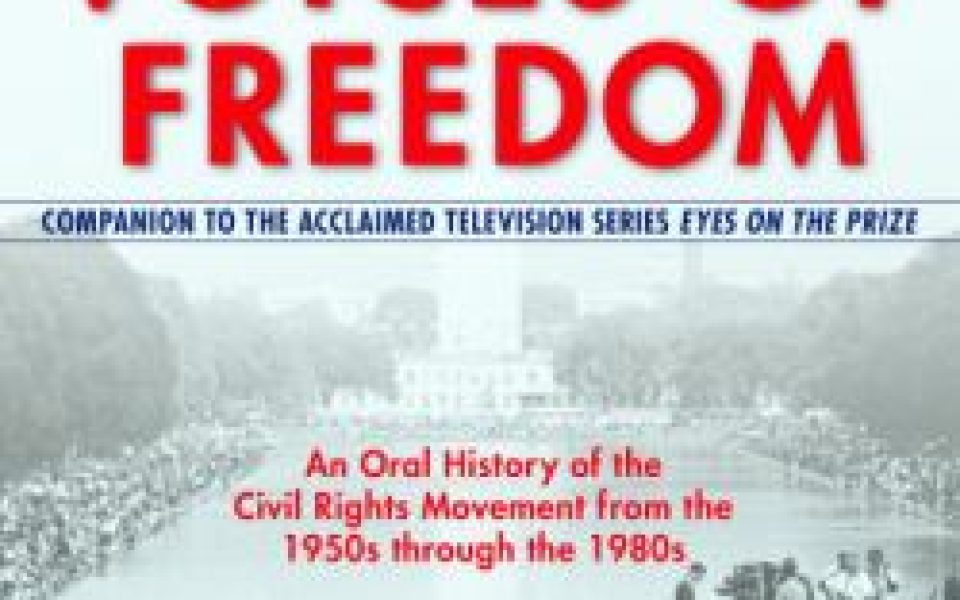America in the King Years, the three-volume trilogy by Taylor Branch, may be the undisputed master narrative of the civil rights movement — or what might more accurately be termed the “black freedom struggle” — but for me it’s fatally compromised by a dependence on the “great man” theory of history.
For obvious reasons, the magisterial trilogy coheres around the biography of the Rev. Martin Luther King Jr., hewing closely to the campaigns of his organization, the Southern Christian Leadership Conference, to impose a narrative arc on the tumultuous events that turned the United States inside-out in the 1960s. But history isn’t made by one person or one organization. It’s a symphony of people acting from different organizing traditions, philosophies and ideologies, constructed from both audacious risk-taking and the habits of everyday life, often times as part of a single current that likely as not summons a counterforce of backlash.
That’s why it’s such a revelation to discover Voices of Freedom: An Oral History of the Civil Rights Movement from the 1950s through the 1980s, a book-form companion to the PBS documentary Eyes on the Prize, which aired from 1987 to 1990. Hat-tip to Shawn Gaynor, my fellow Antioch College alum, for putting me on to it. Although I’ve only read about 20 pages, the chapter headings alone signal the book’s panoramic sweep. The oral history format, with the story told directly by the participants, projects both intimacy and a vibrational sense of historic grandeur.
The highlights of King’s activism are all included — Montgomery in 1955-56; Birmingham, 1963; the 1968 Memphis Sanitation Strike — but other important sagas also flesh out the history: the 1967 Detroit riots, the Ocean Hill-Brownsville struggle for community control over majority black and Latinx schools in Brooklyn, NY in 1967-68, the Attica prison uprising in 1971, and the Boston busing crisis of 1974-76. Some of the names are familiar — civil rights activists like Jesse Jackson, John Lewis and Diane Nash — but others are relatively unknown.
It’s an unruly history. Where does this fit in anyone’s handbook for social change? Albert Wilson, a 13-year-old who was paralyzed from a police bullet while trespassing in a five-and-dime during the Detroit riots, recounts, “It was kind of like a carnival, a parade, a party, because everybody that was there was laughing. No one was crying or worried. If you saw me running down the street, you saw me running with a smile on my face. I saw people running from stores with televisions but with a smile on their face. Everybody was happy. That’s about it. Everybody was happy that day.”
In contrast, US Rep. John Conyers, who tried unsuccessfully to persuade the rioters to go home, recalled “a mean-spirited kind of mood that hung over this.” Edward Vaughn, who was returning with friends from a black power conference in Newark, NJ, described his first reaction on hearing news of the riots on the radio as concern about his family’s safety, but he viewed the outcome as positive.
“After the rebellion was over, there was a strong sense of brotherhood and sisterhood,” Vaughan says. “We saw more and more sisters began to wear natural hairdos, more and more brothers began to wear their hair in the new natural styles. More and more people began to wear dashikis. We had a strong sense of camaraderie in the community — that was all very good for us. We enjoyed that feeling.”
If we can get a handle on the complexity of the history that transpired 70 to 30 years ago, maybe we have an outside chance of grasping the stunning events of the past five years.
Join the First Amendment Society, a membership that goes directly to funding TCB‘s newsroom.
We believe that reporting can save the world.
The TCB First Amendment Society recognizes the vital role of a free, unfettered press with a bundling of local experiences designed to build community, and unique engagements with our newsroom that will help you understand, and shape, local journalism’s critical role in uplifting the people in our cities.
All revenue goes directly into the newsroom as reporters’ salaries and freelance commissions.


Leave a Reply